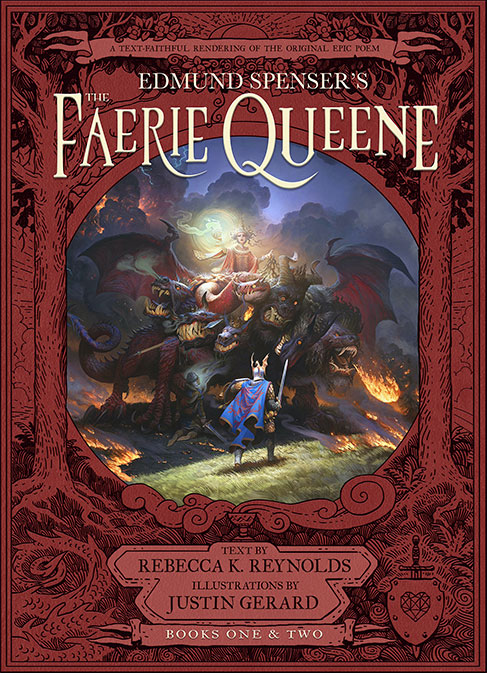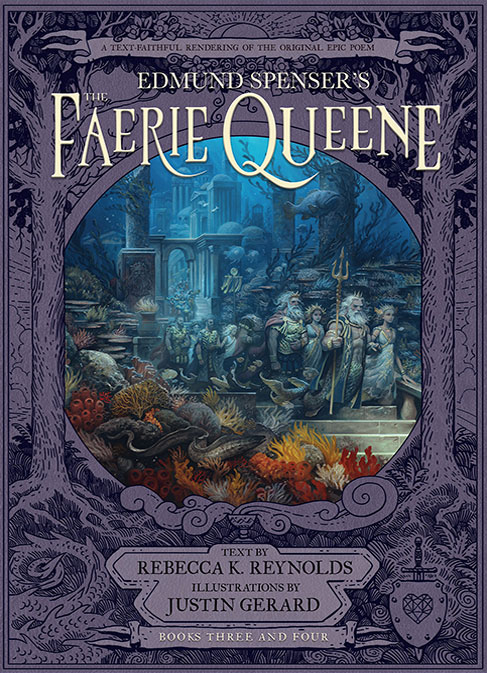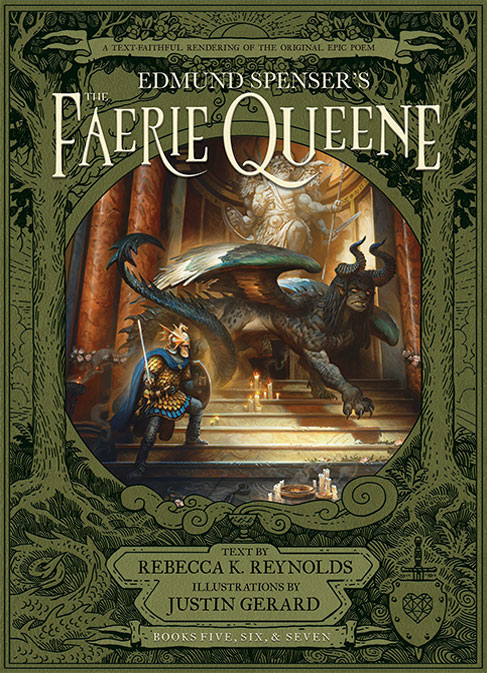


The Red Cross Knight embarks on what first seems a straightforward quest to slay a dragon, rescue a maiden, and save a kingdom. Yet beneath this familiar chivalric framework, Spenser weaves a profound spiritual allegory.
As our noble but naive hero confronts not only external terrors but also the labyrinth of his own flawed heart, he discovers a humbling truth: a hero must be rescued before he can save anyone.

VOLUME ONE: BOOK TWO
Sir Guyon navigates a world designed to test every facet of self-restraint. Refusing to present temperance as mere moderation, Spenser plunges his knight into the psychological complexities of human desire. As Guyon journeys toward Acrasia’s Bower of Bliss, he confronts increasingly seductive temptations, ultimately destroying the beautiful but corrupting bower. Through Guyon’s trials, Spenser explores the vigilance required to maintain virtue in the face of enticement.



VOLUME TWO: BOOK THREE
A king’s daughter turns errant knight as Britomart dons armor to search Faerie Land for Artegall, a man she’s seen only in a vision. Spenser’s tale of chastity is neither safe nor demure. Instead, it follows the treacherous journeys of four women. Britomart actively wields her enchanted spear in pursuit of marital union, Amoret patiently endures trials of true love, Belphoebe maintains her sovereign independence while inspiring devoted admiration, and Florimell relentlessly flees violation. Spenser uses each character’s narrative to frame a purity that extends beyond passive innocence into active virtue.

VOLUME TWO: BOOK FOUR
Book Four orchestrates a symphonic exploration of friendship and love in their myriad forms. Characters from previous books converge as bonds are forged and shattered, jealousies flare, reconciliations bloom, and love proves both poisonous and healing. With masterful poetic dexterity, Spenser interweaves spectacular magical events with intimate everyday emotions to reveal the complexities of human relationships.



VOLUME THREE: BOOK FIVE
Sir Artegall, champion of justice, and his merciless iron companion Talus embark on a mission that has troubled readers for centuries. Here Spenser’s allegory becomes most explicitly political, presenting a problematic defense of English policies that has challenged even his most devoted admirers. Yet within this controversial framework lie profound meditations on the nature of justice itself—questions about mercy versus rigid law, order versus freedom, and the corrupting nature of power. Book Five’s tensions and ambiguities are capable of both warning and guiding all who seek to wield power in a strange new world.

VOLUME THREE: BOOK SIX
Spenser’s pastoral roots burst forth in this tale of Sir Calidore, the knight of courtesy. Within Book Six, the most civilized knight of Faerie Land finds himself lured away from his solemn quest to capture The Blatant Beast, a monster representing slander and malicious gossip. In this last complete tale of The Faerie Queene, our weary poet seems to shed the constraints of courtly flattery, turning instead to celebrate the authentic beauties of rural life. Amidst shepherds and rustic dances, Spenser reveals some of his most profound insights, suggesting that true courtesy might flourish most naturally far from the calculated manners of court.
This set also contains a rendering of Spenser’s alternate ending to Book Three as well as a rendering of the Cantos of Mutabilitie, a fragment contained after Spenser’s death.
VOLUME THREE: FRAGMENT SEVEN
Mutability charges the throne of Cynthia (the moon) before demanding sovereignty over the gods. The age-old debate between change and constancy is featured in this strange and beautiful fragment, as the case of Mutability is brought before Dame Nature, who determines her fate.
